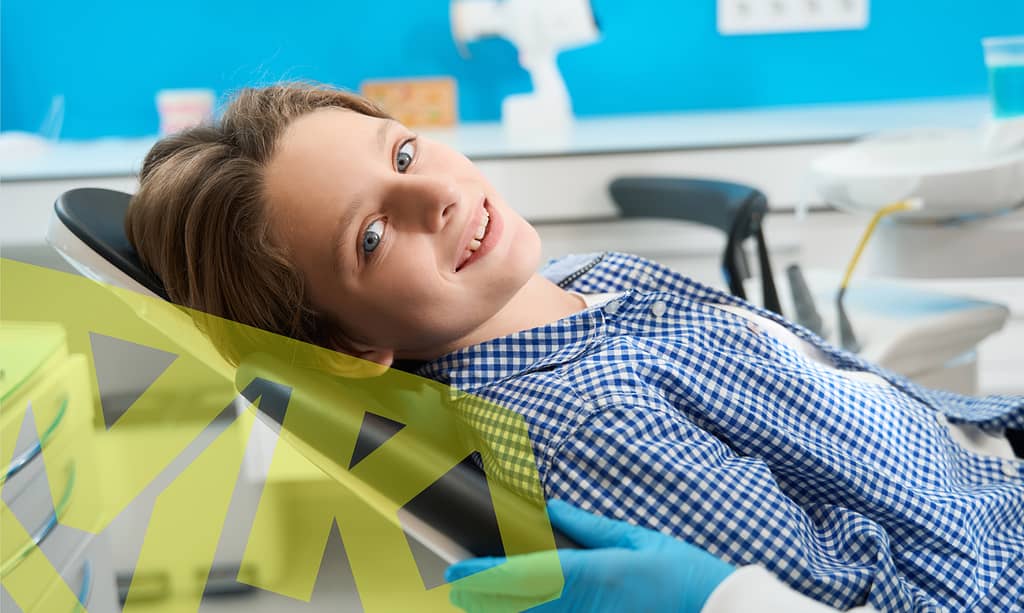Protecting That Straight Smile: 5 Things To Expect During an Early Orthodontic Evaluation

The truth is that orthodontic problems rarely fix themselves, so taking proactive steps to ensure your child’s dental health is essential. The American Association of Orthodontists (AAO) strongly recommends that all children undergo an early orthodontic evaluation by age seven.
Your child has developed enough permanent teeth for a dentist to identify potential issues before they escalate into more significant problems. Understanding these key aspects will empower you to prioritize your child’s oral health and help them achieve a beautiful, straight smile that lasts a lifetime.
What is an early orthodontic evaluation?
An early orthodontic evaluation is a comprehensive examination conducted by a dentist or orthodontist to assess a child’s dental development and identify potential orthodontic issues. During this appointment, the dentist examines various aspects of your child’s teeth and jaw to determine if any concerns require intervention.
Here is an overview of what occurs and what the dentists looks for during an early orthodontic evaluation:
- Overbite—We will check for protruding upper front teeth, commonly known as an overbite or buck teeth. This condition can occur due to a discrepancy in jaw size or thumb-sucking habits.
- Deep bite—A deep bite refers to overlapping the upper front teeth over the lower front teeth. It can lead to problems with proper biting and chewing and potential damage to the gums and palate.
- Underbite—An underbite occurs when your child’s lower jaw protrudes forward, causing their lower front teeth to overlap the upper front teeth. This misalignment can affect the jaw’s functionality and facial aesthetics.
- Open bite—A gap between the upper and lower front teeth when the jaws are closed characterizes an open bite. It can be caused by habits like thumb sucking or tongue thrusting and may impact speech and chewing patterns.
- Crowding—Crowding refers to insufficient space in the mouth for the permanent teeth to erupt correctly. It can lead to overlapping or rotated teeth, challenging oral hygiene maintenance, and increasing the risk of tooth decay and gum disease.
- Crossbite—A crossbite occurs when the upper teeth bite inside the lower teeth. This misalignment can result in jaw asymmetry, difficulties in biting and chewing, and potential issues with the temporomandibular joint (TMJ).
You may hear terms, such as misalignment and malocclusion during your child’s early orthodontic evaluation. Misalignment refers to any deviation from the proper alignment of teeth. It can include crowding, spacing issues, and irregular tooth positioning. Malocclusion refers to an improper bite, where the upper and lower teeth do not meet correctly when the jaws are closed. Both misalignment and malocclusion can cause functional problems, impact oral health, and affect your child’s appearance.
What are the outcomes of an early orthodontic evaluation?
During an early orthodontic evaluation, several key steps are taken to assess your child’s dental health and determine the appropriate course of action. Here are five things you can expect during the appointment:
1. Testing the Bite
When your child’s early orthodontic evaluation is with Must Love Kids, Dr. Mo will carefully evaluate how your child’s upper and lower teeth come together when they bite. This assessment helps identify any issues with alignment, overbites, underbites, or crossbites that may require correction.
2. Taking Pictures of the Teeth
High-quality photographs or X-rays of your child’s teeth are often taken during the evaluation. These images are valuable documentation and aid in analyzing the current condition and progress throughout the treatment process.
3. Taking Impressions
We may use dental impressions to model your child’s teeth and jaws precisely. This allows for a detailed evalution of their bite, tooth alignment, and the relationship between the upper and lower jaws. Impressions provide essential information for treatment planning.
4. Determining the Next Steps Related To Typical Outcomes
After assessing the bite, reviewing photographs, and examining impressions, Dr. Mo will determine the most appropriate course of action based on the evaluation results. The typical outcomes are:
- No treatment necessary: In some cases, the evaluation may conclude that no orthodontic treatment is required. Regular check-ups will be recommended to monitor your child’s dental development as they grow.
- Future treatment may be needed: If potential issues are identified but don’t require immediate intervention, your child will be scheduled for periodic check-ups. These appointments allow the dentist to track their facial and jaw growth and determine the optimal time for treatment, if needed, in the future.
- Early treatment recommendation: If a problem that would benefit from early intervention is detected, we will discuss treatment options with you. This may involve orthodontic appliances or braces to address jaw misalignment, crowding, or irregular tooth positioning. Scheduling treatment will be a priority to address the problem promptly.
5. Scheduling a Follow-up Appointment or Treatment Plan
During the early orthodontic evaluation, if Dr. Mo determines treatment is necessary, we will provide you with a personalized orthodontic treatment plan and schedule your child’s next appointment to begin their treatment journey. For cases where no immediate treatment is required, or future treatment may be needed, we will schedule follow-up appointments to monitor progress and maintain regular communication.
We aim to ensure comprehensive care and support throughout your child’s orthodontic experience. We prioritize proactive monitoring and stay connected with you to assess any changes or developments that may impact their orthodontic needs.
Prioritize your child’s dental health today with an early orthodontic evaluation.
Don’t underestimate the significance of an early orthodontic evaluation for your child. By taking proactive steps and scheduling an evaluation by age seven, you empower dentists to detect and address orthodontic concerns effectively.
Whether it’s to initiate treatment, monitor progress, or provide guidance for future intervention, early evaluation sets the foundation for a lifetime of optimal oral health. Act now and book an appointment with Dr. Mo and the team at Must Love Kids to protect your child’s smile and ensure their dental well-being in the years to come.